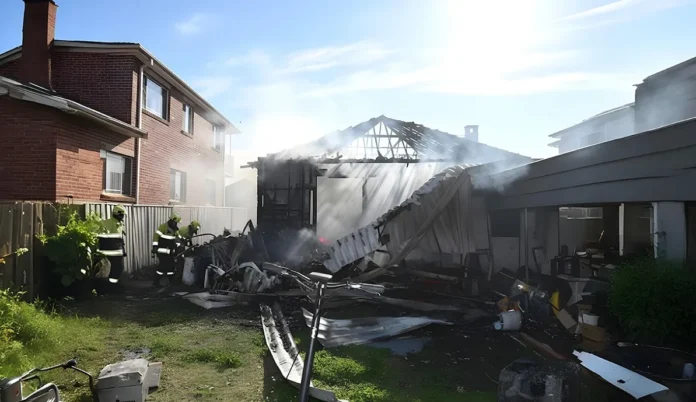Experts Warn of Escalating Risks as “Clean Energy” Devices Continue to Explode
SYDNEY, Australia — Fire crews in New South Wales responded to yet another lithium-ion battery fire this week, after a home’s solar inverter system erupted into flames inside a suburban garage. The blaze, which destroyed the garage and filled the surrounding area with thick black smoke, is the latest in a growing series of lithium battery-related incidents across Australia.
According to Fire and Rescue NSW, the fire began when a lithium-ion inverter battery, part of a residential solar setup, overheated and exploded. The blast was so powerful that it blew debris into the street and forced nearby residents to evacuate as firefighters battled to prevent the flames from spreading to the main house.
“When we arrived, the fire had already taken over the garage,” said Fire and Rescue NSW Superintendent Adam Dewberry. “This was another case of a lithium battery failure, and once these things go up, they burn incredibly hot and fast. They’re tough to extinguish.”
Lithium-ion batteries have become a cornerstone of Australia’s renewable energy push, powering everything from home inverters and e-bikes to power tools and electric cars. But behind their image of sustainability lies a dangerous truth: these batteries are volatile and can explode without warning.
In the past year alone, Fire and Rescue NSW has responded to over 270 battery-related fires, many of which involved household solar storage systems. The agency has repeatedly warned that the risk is increasing as unregulated and cheaply made products flood the Australian market.
“People are installing these systems believing they’re safe, but many are poorly manufactured or installed without proper ventilation,” Dewberry warned. “When a fault occurs, the result can be catastrophic.”
When lithium-ion batteries fail, they undergo a phenomenon known as thermal runaway, a chemical reaction that rapidly increases the heat inside the battery. Once ignited, the fire burns hotter than 1,000°C, producing toxic gases such as hydrogen fluoride, which makes it dangerous to even breathe near the smoke.
Unlike regular electrical fires, lithium fires can reignite hours later, even after they appear to be extinguished. Firefighters often have to monitor burned batteries for days to prevent re-ignition.
“You can’t just spray water on these fires,” said energy safety specialist Dr. Laura Kingsley. “The chemistry inside keeps feeding the flames. That’s why these incidents are so destructive; once they start, they’re nearly impossible to stop.”
Safety experts and consumer advocates are now calling for stricter regulations on lithium-ion inverter batteries, including mandatory certification and installation standards. They argue that while clean energy is crucial, consumer safety must come first.
“The green energy movement has moved faster than safety oversight,” said Kingsley. “Every week, we’re seeing another fire like this. People need to know what’s sitting in their garages, and how dangerous it really is.”
Officials are urging homeowners to inspect their systems, avoid overcharging batteries, and store units in well-ventilated areas away from living spaces.
As Australia continues to embrace renewable technology, the rise in lithium battery fires paints a grim picture: the very devices designed to power a cleaner future may be putting lives at risk today.
Until stronger safety standards are enforced, every lithium-ion battery could be a potential fire waiting to ignite.
Read the Latest Battery News Shaping the Global Power Market
Another Lithium Battery Fire Hits Australian Home- Source


